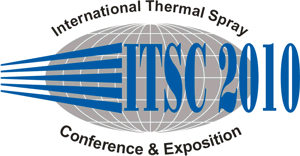| Authors: |
Thomas Coyle / Centre for Advanced Coating Technologies,
University of Toronto, Canada
Jahan Saaedi / Centre for Advanced Coating Technologies, University of Toronto, Canada
H. Arabi/ Department of Materials and Metallurgical Engineering, Iran University of Science and Technology, Iran
S. Mirdamadi/ Department of Materials and Metallurgical Engineering, Iran University of Science and Technology, Iran
|
|
| Abstract: |
This research examined the influence of processing parameters on the structure of a Ni-50Cr coating applied by high velocity oxy-fuel (HVOF) spraying onto stainless steel specimens. This type of coating is normally used as protection against heat and corrosion encountered in power plant and marine boilers, and oil refinery heaters. A statistical design of experiments identified fuel and oxygen flow rates and spraying distance as the most influential parameters controlling the in-flight characteristics of the powder particles prior to impact. The effects of these parameters on the porosity level, oxide content, and microhardness of the coatings was then investigated in more detail. These results indicated that the oxide content and hardness of the coatings were dependent on the gas combustion ratio but not on spraying distance. The porosity level and amount of unmelted particles were reduced at the longest spraying distance. A complex, fine scale microstructure of non-equilibrium phases was obtained due to the rapid cooling experienced by the splats which make up the as-deposited coatings. XRD analyses indicated that the as-deposited coatings consisted predominantly of a single fcc ã-Ni phase. Two small peaks suggested the presence of NiO and/or NiCr2O4 at the limit of detection (~5%). Shoulders on the main ã-Ni peaks were interpreted as evidence of a second, lower Cr content ã-Ni phase.
|
|
